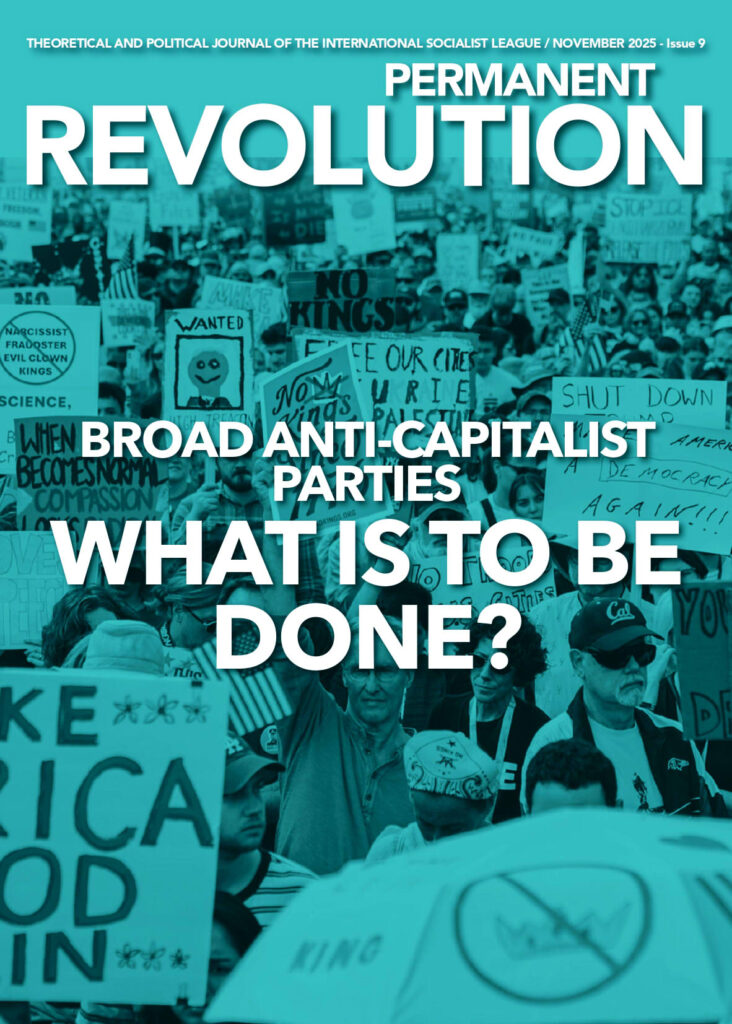As he went through the 1929 crisis, Schumpeter defined capitalism’s incentive for continuous innovation with the concept of “creative destruction” inspired by Marx. For Schumpeter, crises are like periods of progress and growth during which creative destruction peaks. Because, according to him, the system renews itself in crises via engulfing low-performing companies by the dynamic ones. The destruction caused by capital on human life and nature for the sake of profit and savings is accepted as the criterion of capitalism’s dynamism.
The 1929 crisis (the Great Depression) was just such a process of destruction on a global scale. Many banks went bankrupt, factories were closed; mass unemployment and hunger had surrounded the USA, the epicenter country of the crisis. Less profitable firms were replaced by more modern and powerful ones. The crisis, which spread all over the world, had greater destruction with the World War II on a global scale. The destruction and reconstruction of the entire European continent and Japan was also the basis for the 1950s boom.
However, Schumpeter’s creative destruction was left behind since the political consequences of the destruction in 1929 (such as revolutions, wars, Nazism) were dreadful also for the bourgeoisie. The 1930s were a period of global uprisings. Consequently, the ruling classes of the world preferred to reduce the scale of the destruction by saving the companies with the concern that the anger and the energy of the people created by the deep economic crises might lead to a revolutionary period once again. The 2008 crisis was literally an example of this. The US Federal Reserve offered approximately $3.6 trillion to the financial system between 2008 and 2014 by purchasing bankrupt bank debts, mortgage instruments, and treasury debt securities, while creating monetary expansion by keeping interest rates at 0.25% for 7 years starting from the end of 2008. Another step taken to prevent destruction was implemented with the $700 billion TARP (Troubled Asset Recovery Program) to save the banks and companies at risk of bankruptcy. In addition to the centuries-old banks and insurance companies, General Motors, Chrysler, and GMAC (Ally), the 3 largest automotive institutions of the USA, were also expropriated and rescued.
These policies could have delayed the destructiveness of the 2008 crisis for a while, but could not destroy the link between crises and riots. As the accumulated balance of the crisis is unbearable for the working people of the world, we witnessed struggles and uprisings all over the world. Stating that the peak was in 2019 wouldn’t be an exaggeration. 2019 became a mini 1968 by leading great social explosions in many countries of the world.
The pandemic caused a break in this global protest wave but it continued in 2020 and now it promises bigger waves. First of all, the poor of the world had the 12-year-old burden of the 2008 crisis on their shoulders. As if it wasn’t enough, the Covid-19 pandemic exposed the world economy to sudden and widespread destruction in 2020. Of course, the rulers of the world tried to prevent the severity of destruction by using public resources once again; according to the IMF report, the extent of the packages prepared to reduce the economic impact of the pandemic by the states reached 12 trillion dollars. However, it was not possible for them to be able to stop this destruction as the pandemic caused the economies were shut down, unemployment peaked and global demand dropped. Moreover, the deep differences between the economic capacities of the nation-states have been revealed and the working people of the poor countries are almost abandoned to their fate in the face of pandemics.
Contrary to the government’s expectation for a rapid recovery that has pumped optimism with the introduction of the vaccine for the interest of the market, 2021 will not be easy for the poor people of the world. This is an era when global inequalities are at their peak. When the pandemic ends and the market opens, it is unclear how many of the long-term unemployed laborers will have a job to return to. The number of zombie companies, which would collapse if support were to be cut, are kept alive with loans has increased during the pandemic. According to the German Deutsche Bank, one of every 5 companies in the USA currently trading on the stock exchange is actually a zombie company. The number of these companies, which are not allowed to go bankrupt by the Central Bank, has multiplied in recent months.
The ones, who don’t hesitate to give money when it is for the companies in the West, do not show the same generosity to the working classes. In the USA, where the number of unemployed due to the pandemic is estimated to reach 50 million, the unemployed are mostly left to their own fate. Almost half of the workers in the USA are employed in small businesses, in low-paying jobs, and the rate of long-term unemployed will increase significantly as a considerable part of these enterprises will not be able to overcome this crisis. High unemployment, of course, means non-spending households and undischarged debts.
In order to overcome the post-2008 profitability crisis, financialization was in a continuous expansion in the developed world. The Central Banks provided trillions of dollars, euros to the companies, almost for free. With this money, financial capital had the opportunity to profit from the surplus value created through the brutal exploitation of the laborers by taking interest in return for its loans to so-called emerging markets, which continued to show economic vitality. After the 2008 crisis, China kept the global economy alive and stimulated the developing markets with the demand for raw materials. However, China is not growing with the same trend, its economy has entered a debt spiral, and it does not provide an impulse for the economies of developing countries anymore. On the contrary, there is a possibility that some of the developing countries, which borrowed a lot throughout the 2000s and peaked in debt during the pandemic, might go bankrupt as in the examples of Greece (in 2015) and Lebanon (in 2019).
Although the leading countries of imperialism now aim to implement a policy of monetary expansion with much larger sums, the situation is worse than before. For example, danger bells are ringing for the USA, which thinks that it can print unlimited money based on its feature of being a global reserve currency. There are rumors about an increase in the USA’s inflation and it may reach 3%. When inflation rises, they cannot continue to print money for free. Thus, their “strongest” means of struggle against crisis will become useless. Countries that have the most fragile economies such as Turkey and Brazil don’t even have such an option. Printing money in these economies means a rapid depreciation of the local currency, increase in inflation and interest rates. In short, it does not mean anything other than triggering the crisis.
All in all, it would not be an exaggeration to expect a chain of social explosions all over the world after the pandemic. The increases in gap between the classes, poverty and unemployment are one side of the coin. On the other side, bourgeois governments in many countries of the world will collapse in a debt swamp. The United Nations has warned that the world is facing the worst food crisis of the past 50 years. We can expect rising food prices to exacerbate social explosions in poor countries. We all remember how violent increases in food prices in 2008 and 2011 exacerbated social explosions in poor countries. There is no need to be a prophet to predict that the class struggle will sharpen in the post-pandemic world as a result of all these.
In 2021, if the vaccine becomes effective and the pandemic falls off the agenda, social struggles will reignite. 2021 and the years afterward will be written in history as the times of rebellion. Will this wave of rebellion be crowned with victories? Let this be the subject of the next article.




